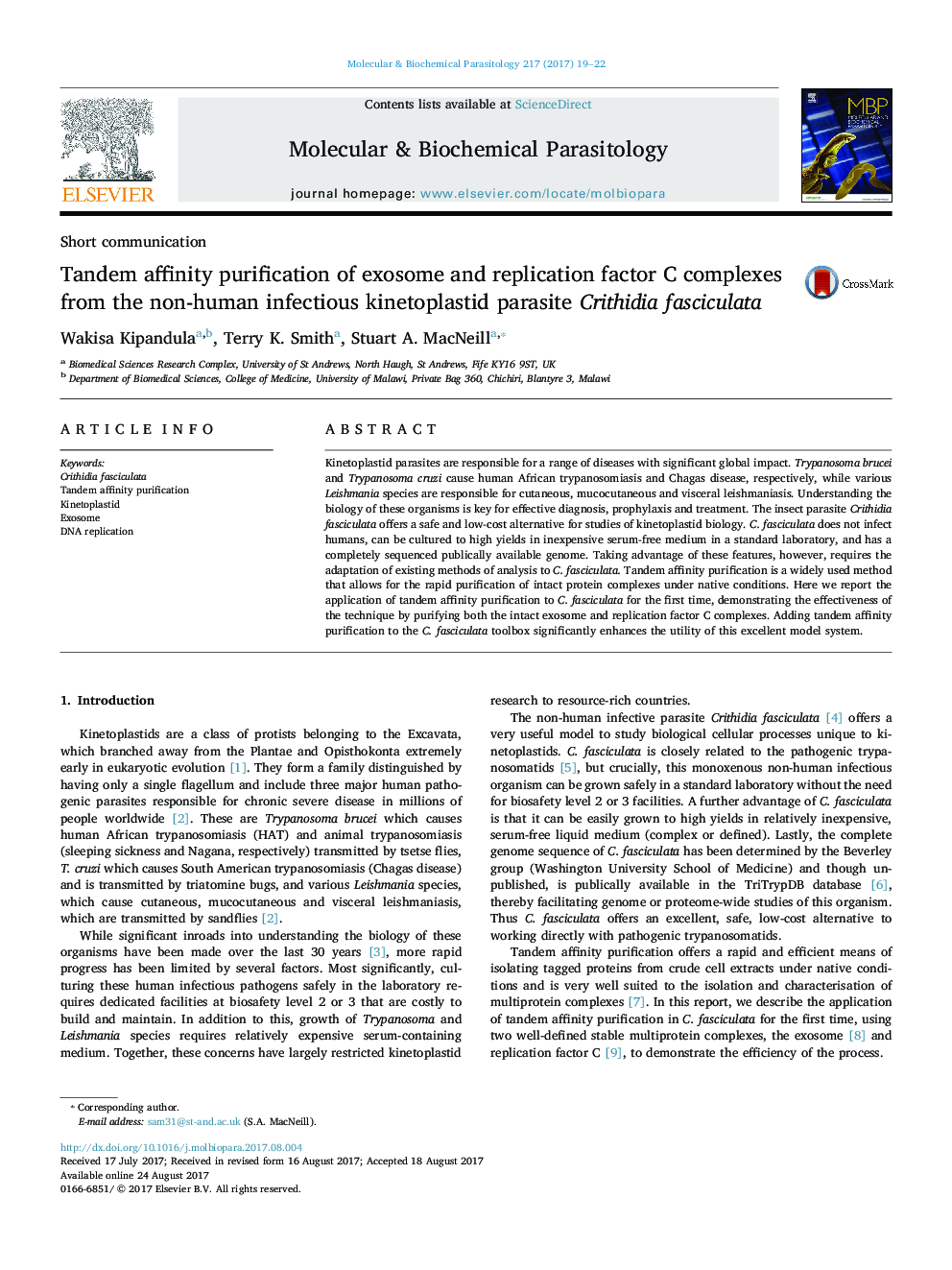| Article ID | Journal | Published Year | Pages | File Type |
|---|---|---|---|---|
| 5591692 | Molecular and Biochemical Parasitology | 2017 | 4 Pages |
â¢A vector for PTP fusion protein expression in Crithidia fasciculata is constructed.â¢C. fasciculata exosome and replication factor C (RFC) complexes are PTP purified.â¢Nine additional C. fasciculata exosome subunits co-purify with RRP4-PTP.â¢Four C. fasciculata RFC subunits and a RAD17 homologue co-purify with RFC3-PTP.â¢The presence of RAD17 implies that a RAD17-RFC complex exists in C. fasciculata.
Kinetoplastid parasites are responsible for a range of diseases with significant global impact. Trypanosoma brucei and Trypanosoma cruzi cause human African trypanosomiasis and Chagas disease, respectively, while various Leishmania species are responsible for cutaneous, mucocutaneous and visceral leishmaniasis. Understanding the biology of these organisms is key for effective diagnosis, prophylaxis and treatment. The insect parasite Crithidia fasciculata offers a safe and low-cost alternative for studies of kinetoplastid biology. C. fasciculata does not infect humans, can be cultured to high yields in inexpensive serum-free medium in a standard laboratory, and has a completely sequenced publically available genome. Taking advantage of these features, however, requires the adaptation of existing methods of analysis to C. fasciculata. Tandem affinity purification is a widely used method that allows for the rapid purification of intact protein complexes under native conditions. Here we report the application of tandem affinity purification to C. fasciculata for the first time, demonstrating the effectiveness of the technique by purifying both the intact exosome and replication factor C complexes. Adding tandem affinity purification to the C. fasciculata toolbox significantly enhances the utility of this excellent model system.
Graphical abstractTools and techniques for tandem affinity purification of protein complexes from the non-human infectious kinetoplastid parasite Crithidia fasciculata, a powerful model for the human pathogenic trypanosomatids.Download high-res image (198KB)Download full-size image
